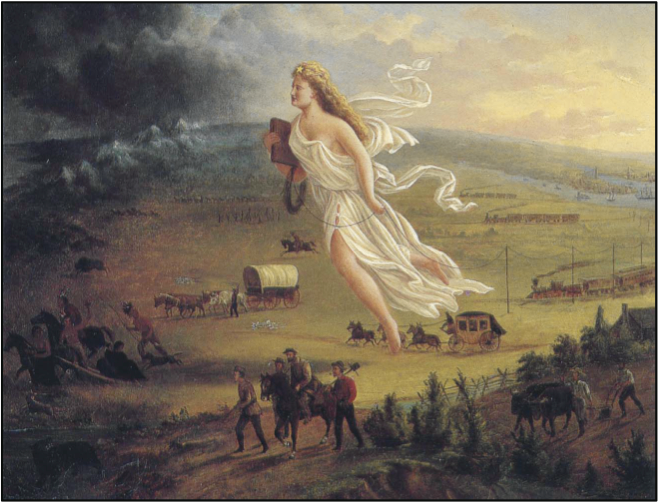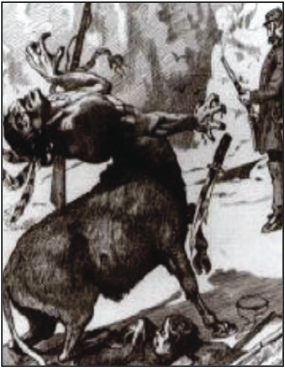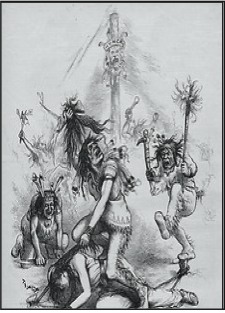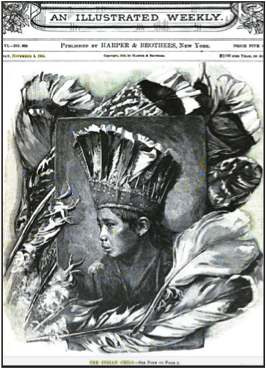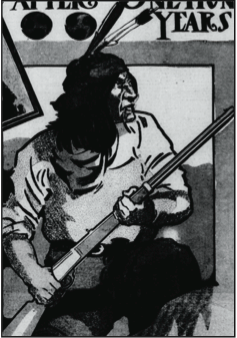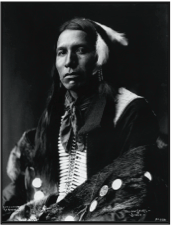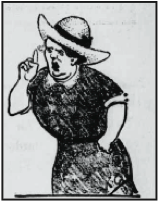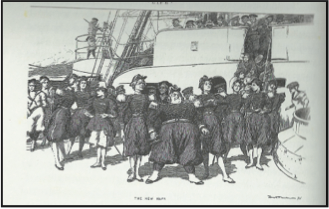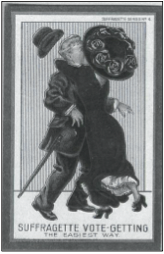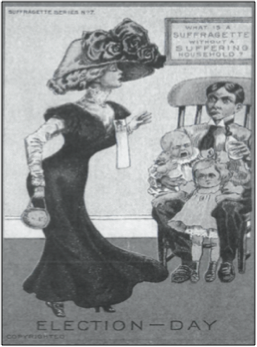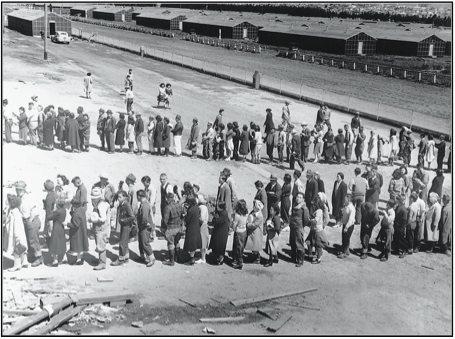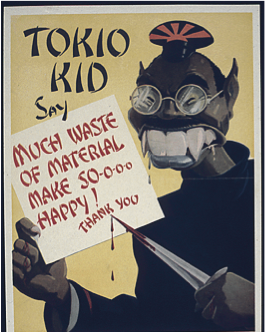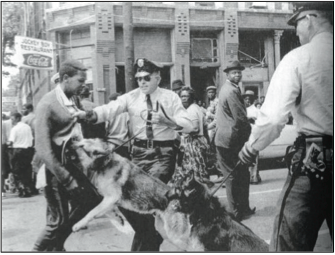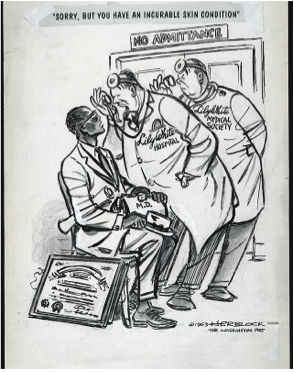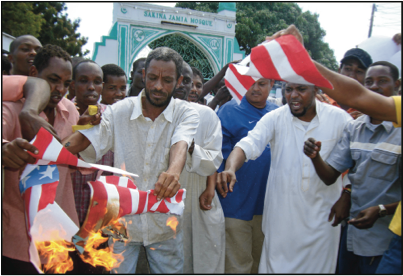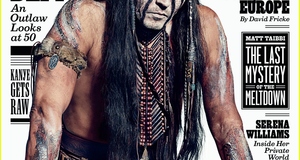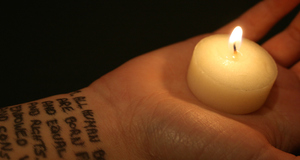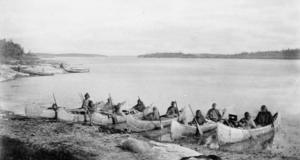From Elon Journal of Undergraduate Research in Communications VOL. 4 NO. 1Visual Persuasion: The Media's Use of Images in Framing People GroupsV. WomenThe women's suffrage movement in the United States was defined by females questioning the traditional roles imposed on their lives and seeking expanding rights. This led dominant males in society to feel their power threatened and attempt to reassert control and authority over the opposite sex. The core of the anti-suffragists' philosophy was that the nature of women, as ordained by God, was inconsistent with participation at the polls.33 The specific focus on the limitations of women, including their excitable temperaments, was often hard to counter: "This emphasis on intangible qualities worked well in the [anti-suffragist's] struggle to maintain the status quo. Suffragists knew they could not challenge these undefined perceptions of women, and, therefore, were limited in the possible direct attacks on the anti-suffragists' logic."34 By the time the suffrage movement was launched in the late 19th century and reached its peak in the early 20th, the role of the press within society, and its key players, had been well-established: "The Fourth Estate was a body overwhelmingly peopled by – and largely committed to serving – men."35 The men were threatened by the thought that women could potentially arise from their positions as a lower class of society and take hold of the power base traditionally held by the male half of the population. Thus, the media reflected this fear – the major male players in American media of the time either entirely ignored the Women's Rights Movement, or when they did cover it, used methods of mockery and disdain.36 Images of women fell into two categories: (1) cartoons of women emphasizing their weaker nature, lack of intelligence, or potential problems caused by granting them the right to vote; and (2) anti-suffrage propaganda used to portray women as "the other" and destroyers of the family. It is almost a century since women first gained the right to vote and society has yet to crumble into complete disarray. Yet, when women's suffrage was first demanded at the Seneca Falls Convention in 1848 in New York, that's exactly what men feared. In order to stir up opposition to the women's right to enter the polling booth, the media became a key tool in suppressing women's voices. Females were described as weak, unintelligent, inferior, silly and giving them the right to cast a vote called a sin against God.37 And while the words published against the movement would have been enough to dampen their shouts, newspaper images and cartoons also served as a means of limiting the cause. In August 1912, the New York Tribune ran a story about a rally for women's suffrage at Hyde Park. The headline read "War Cry of the Militant Suffrages Enticed Kate Carew to Hyde Park," accompanied by a photo of a matronly woman wagging her finger while clearly admonishing someone (Figure 7). The headline and the photo both portray the females as demanding, almost violent (as expressed by the use of the word "militant"). The image, in particular, is reminiscent of a mother scolding her young son. What grown man wants to be scolded by a woman who could potentially erode some of his power? While the Tribune was not as direct in discrediting the rally, perhaps because the reporter was surprisingly a female, other papers were quick to deride such gatherings of women. An 1852 meeting in Syracuse was called a "Tomfoolery Convention" and described as a "mass of corruption, heresies, ridiculous nonsense, and reeking vulgarities which these bad women have vomited forth."38 Magazines were the most common source of images challenging the women's rights movement, with Life magazine particularly known for line drawings that placed women in unflattering light. One such image showed a female minister behind a pulpit in an abandoned church, while another depicted women "smoking, drinking alcohol, and cavorting in a modern-day club for women."39 In Figure 8, we see the worst fears of men being realized, as women take over control of the Navy, completely stripping men of their power. Similar to the written abuse often hurled against them, the physical appearances of the women in the photo are exaggerated and uncomplimentary. Propaganda images were often distributed among anti-suffragists in an attempt to belittle women and the impact they would have as voters. Most notable was the 1909 campaign by the DunstonWeiler Lithograph Company of New York, which published a set of 12 full-color cartoon postcards "lampooning, satirizing, and opposing woman suffrage…."40 The postcards portray the dangers of women voting, including men being forced to stay home and care for children, women fraudulently paying for votes, and a wife who loves her vote more than her husband. These images were particularly significant due to the popularity of postcards during the era – they were often circulated more widely than magazines and were not dependent on literacy, thereby reaching far beyond the scope of normal print media: "Postcards were ubiquitous, cheap, easily accessible, and clearly participated in the suffrage controversy in a way that developed and extended the argument beyond what can be found in the verbal arguments contained in broadsides and print media."41 In this way, anti-suffragists could easily and quickly relay their message and effectively frighten the ruling class of men about how women would surely erode their power if given the vote. However, in many ways, these postcards simply echoed the words of opponents printed in the preceding decades, who also emphasized the wife's need to tend to the home. In March 1870, the New York Times wrote that "the number of woman…who can keep house without feeling what are called its 'cares' overwhelming is alarmingly small."42 VI. Japanese AmericansOn February 19, 1942, a little more than two months after the attack on Pearl Harbor, President Franklin D. Roosevelt signed Executive Order 9066 into law that called for the internment of an estimated 120,000 American-born Japanese citizens.43 The Japanese Americans were rounded up and placed in shelters in some of the most inhospitable regions of the country, all in the name of protecting the country from more attacks by the Japanese. The immediate reaction within the pages of the press was swift, both in the form of editorials and letters to the editor, the majority of which voiced support for the incarceration of innocent citizens.44 A common thread ran among all coverage: Japanese Americans were, in fact, not a part of the American identity, which banded together in the wake of the devastation of the Pearl Harbor attacks. In one letter to the editor, George Martin expressed a racism that was prevalent through much of the coverage, that tied Japanese Americans to the pilots who bombed Pearl Harbor, and not the nation they had called home all their lives: "The way I look at it, the average tame American Jap is hard to tell from a wild Jap. The Japs in Tokyo, no doubt, intended to use the Japs already here as a screen to filter into our midst, then stab us in the back."45 And while letters against internment were published, not a single of seven major newspapers on the West Coast, nor the New York Times, questioned the military's claim that the Japanese Americans were a threat.46 Keenly aware of how visual representations of the internment would be perceived, the government closely controlled the images that were published of the round-up and internment campus. Images of Japanese Americans generally fell into two categories: (a) photographs of the internment that served to demonize the Japanese American, without highlighting their maltreatment in the internment campus; and (b) propaganda images portraying all Japanese as a threatening savage and an enemy that must be stopped. Photographer Dorothea Lange, well known for her images of the Great Depression, was called upon by the War Relocation Authority to take photos of the internment in 1942. The Authority provided her with strict restrictions that included no images of barbed wire, watchtowers, armed soldiers, or Japanese resistance: "They wanted the roundup and sequestering of Japanese Americans documented – but not too well."47 Lange was entirely restricted from talking to detainees and almost lost her job when one of her images showed up in an anti-interment pamphlet published by the Quakers.48 The images Lange produced were, in fact, so damning of the federal government and failed to demonize the Japanese American that the War Relocation Authority censored the vast majority, leaving 97 percent of Lange's work unpublished. The images that did make their way to the pages of publications were those that showed the process of internment, but not the negative, brutal side of it. Japanese American families standing in line before entering their new home were common, as were images of daily life in the camp. Those images that tied Japanese Americans to the national American identity were quietly impounded, lest the public forget that the Japanese – all of them – were the enemy. The most important visual tool used to frame the Japanese Americans during the World War II internment was propaganda which, again, relegated all Japanese, even those born on American soil, to the position of enemy and threat within the larger American community. This served a dual purpose, both of uniting the United States against a common enemy and justifying the government's use of internment camps to prevent any further attacks from happening. Images such as the Tokio Kid (Figure 12) were frightening and played up to racial stereotypes about the physical appearance and culture of Japanese. In many cases, the propaganda was used to warn the public about Japanese Americans helping their peers, echoed in the pages of newspapers that incorrectly claimed local Japanese were helping their homeland government prepare another attach on the West Coast.49 The propaganda posters only served to add fuel to a fire that had been blazing since December 7, 1941, as evidenced by a story published by the Los Angeles Times the day after the attack: "A viper is nonetheless a viper wherever the egg is hatched – so a Japanese American, born of Japanese parents, grows up to be a Japanese, not an American."50Continued on Next Page » Suggested Reading from Inquiries Journal
Inquiries Journal provides undergraduate and graduate students around the world a platform for the wide dissemination of academic work over a range of core disciplines. Representing the work of students from hundreds of institutions around the globe, Inquiries Journal's large database of academic articles is completely free. Learn more | Blog | Submit Latest in Business & Communications |

